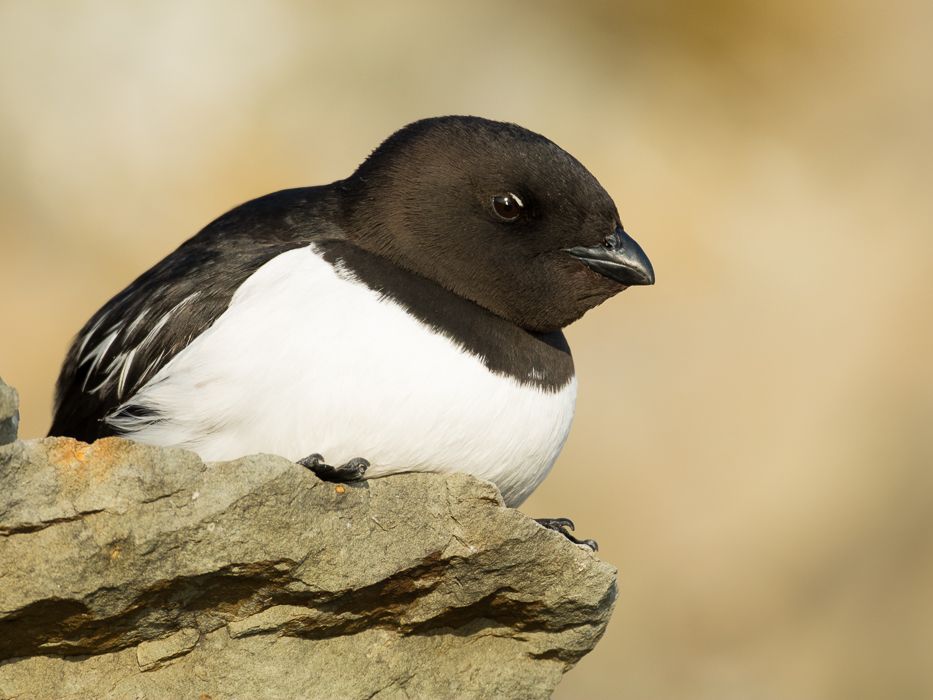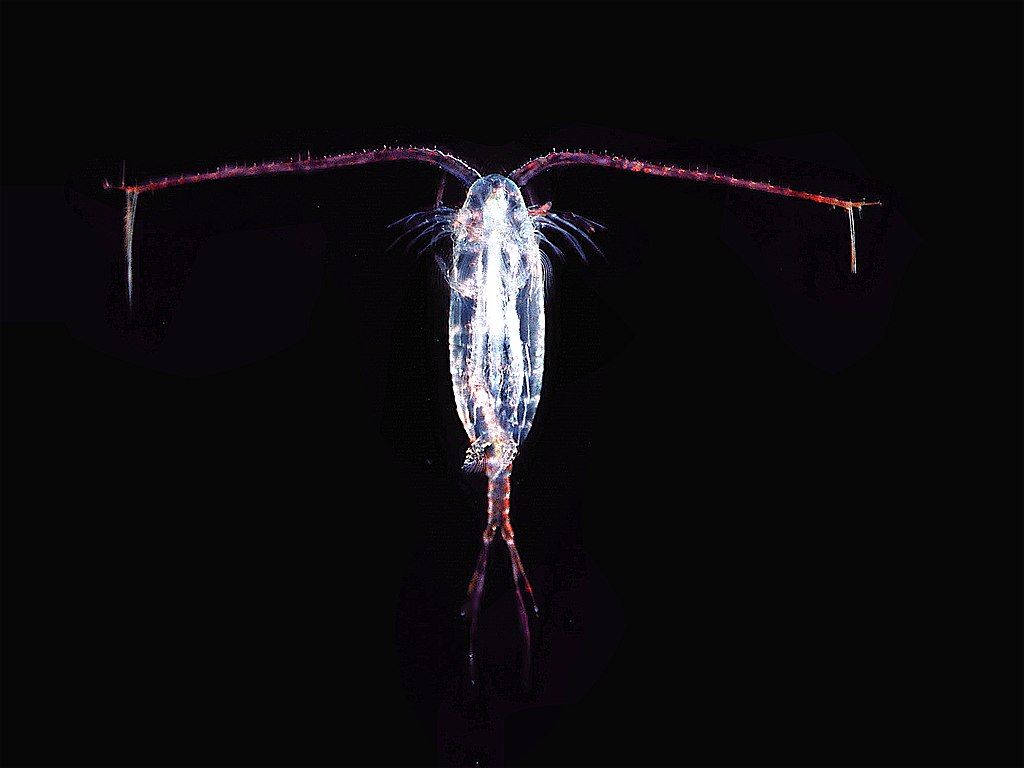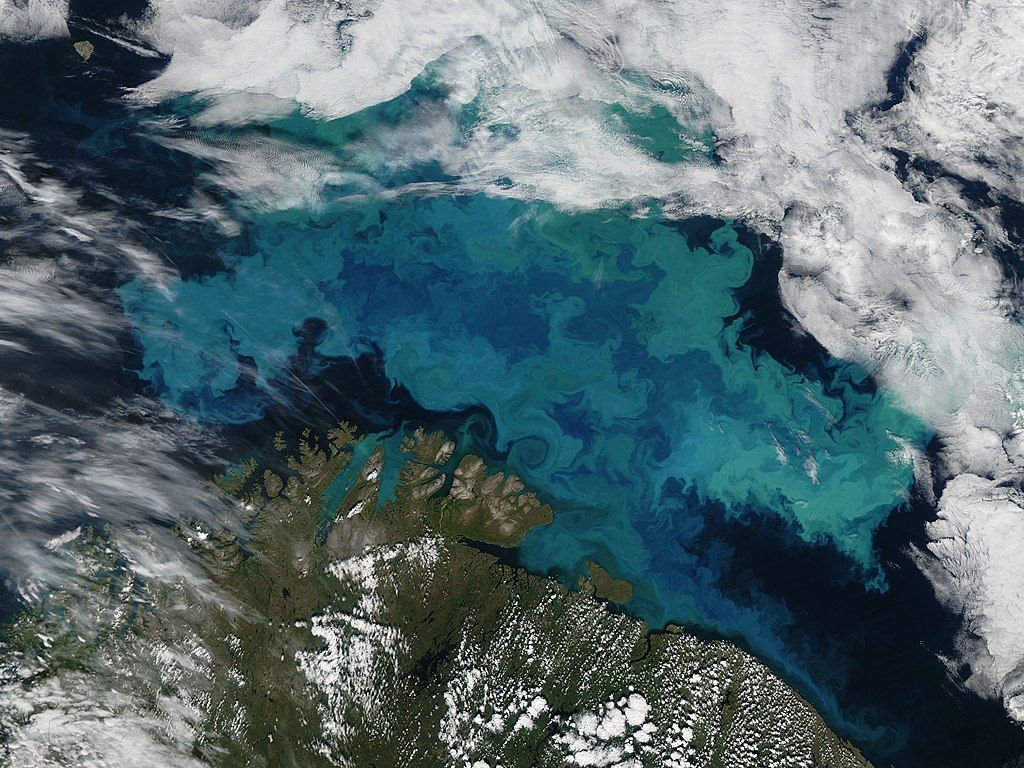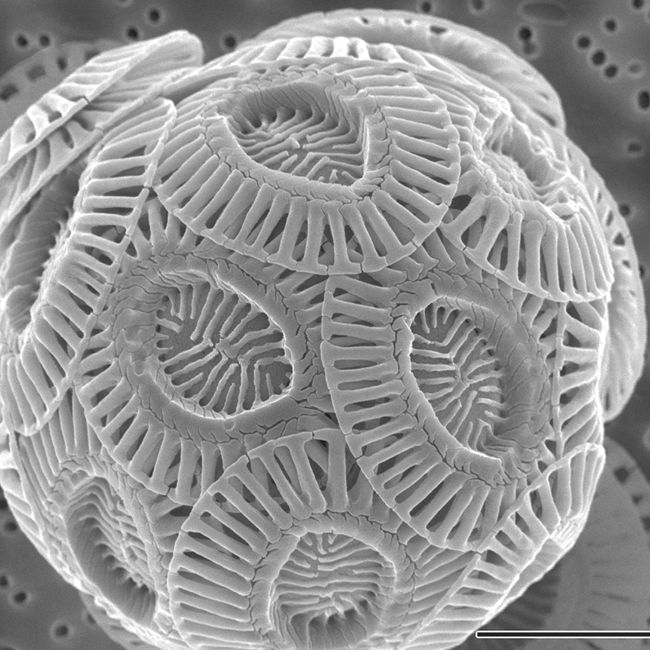
Though this arctic seabird doesn’t eat algae it will starve if marine algae is not abundant. On Throw Back Thursday we’ll learn more with the help of two vintage articles.
About the size of a starling, the dovekie or little auk (Alle alle) breeds on islands in the high arctic including Greenland, Svalbard, and Franz Josef Land. Its population of 16-82 million birds spends the winter in the North Atlantic, occasionally as far south as Cape Hatteras. Learn more with a video in this article: Birds On Ice: Dovekie.
Dovekies eat small invertebrates and fish but the majority of their diet is made up of copepods. A single dovekie eats 60,000 of them per day. Quadrillions(*) fall prey to dovekies during the breeding season. So … What the heck is a copepod?

Here’s where the algae comes in.
Copepods eat microscopic marine algae called phytoplankton that contain chlorophyll and need sunlight to live and grow. In the high arctic, the summer sun makes phytoplankton bloom, as seen below in the Barents Sea. It takes quadrillions phytoplankton to feed billions of copepods to feed the dovekies.

Phytoplankton is really tiny, so small that you need an electron microscope to see it. The Barents Sea bloom above is thought to be Emiliana huxleyi, shown below. The disks are made of calcium carbonate which is also the primary component of seashells. The calcium in phytoplankton makes its way up the food chain.

Thus if phytoplankton is scarce, copepods are scarce and the dovekies starve. That’s how a seabird relies on algae.
(photos from Wikimedia Commons; click on the captions to see the originals)
(*) How many copepods? Here’s a back of the napkin calculation: Suppose there are 50 million dovekies, each one eating 60,000 copepods/day. Dovekies live in their breeding range for four to six months, so there have to be quadrillions of copepods available during that period. Dovekies aren’t the only animal that eats copepods. The numbers are staggering! (My original calculation had a power-of-10 problem. See Tom Brown’s correction.)
Hi Kate. You might have spilled coffee on your back of the napkin calculation. 50 million dovekies each consuming 60,000 copepods daily would eat 3.5 quadrillion (million million) of the little buggers over 4 months; 5.5 quadrillion over 6 months.
Oops! My math is wrong here. The correct calculation using the numbers you provided is 360 quadrillion copepods.
No problem! I was originally off by a million so I’m grateful that you cleared it up for me. What’s a few zeroes among friends? 😉
Dovekies are so endearing. I’ll never forget the first time I saw one. I was walking on the beach in New Jersey when a man approached me because he noticed that I had binoculars. He said that he just saw an interesting bird, “It looked like a baby penguin.” It was December so I took “baby” to mean very small and it wasn’t too long before I thought….dovekie. I scanned and scanned until sure enough I spotted the dovekie foraging close to a jetty. I was able to observe the bird for quite some time from the jetty. It was the thrill of a lifetime.
ps—That phytoplankton is crazy looking.